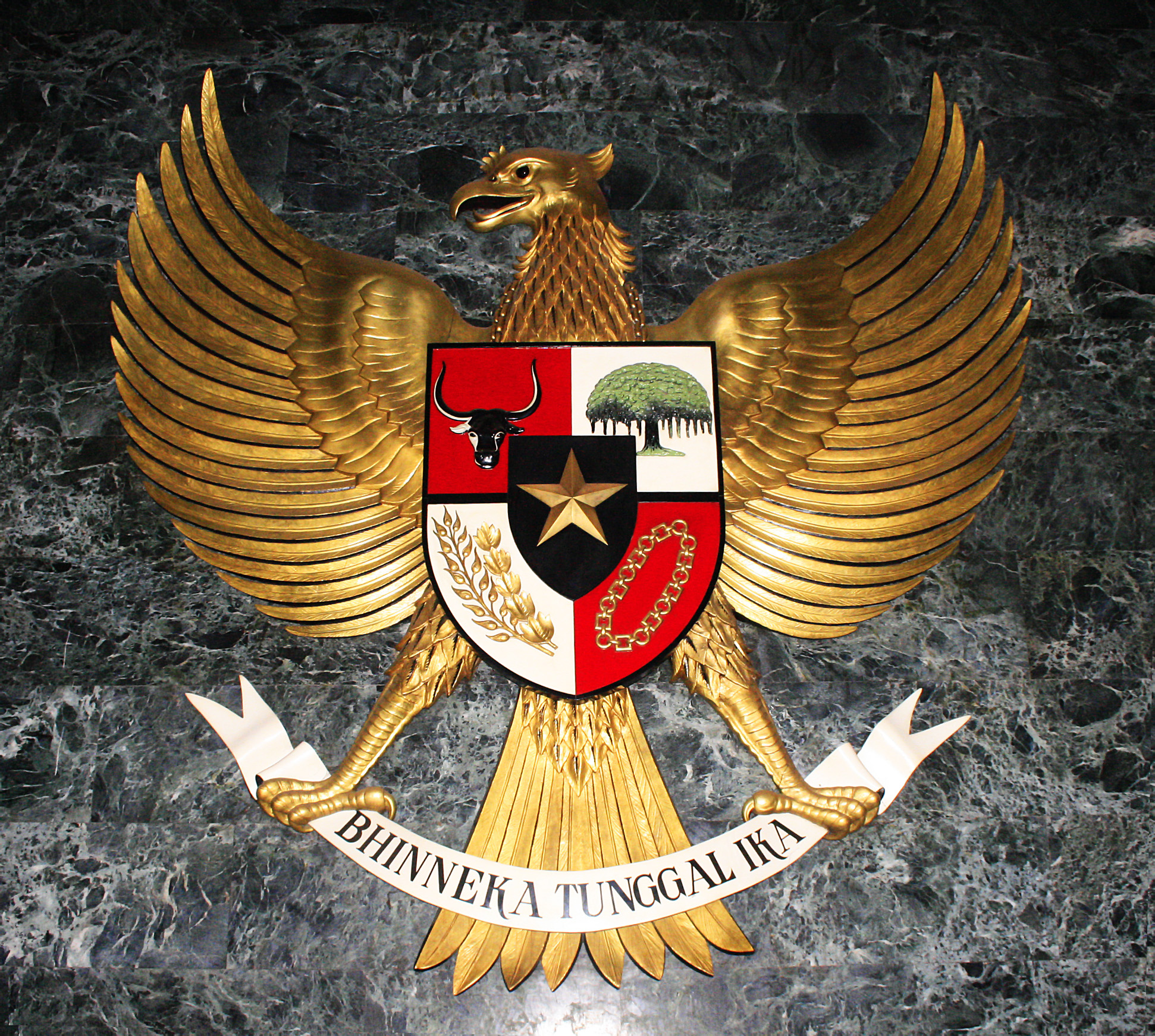|
Indonesian 100,000 Rupiah Note
The Indonesian one hundred thousand rupiah banknote (Rp100,000) is a denomination of the Indonesian rupiah. Being the highest and second-newest denomination of the rupiah (after the Indonesian 2,000 rupiah note, Rp2,000 note), it was first introduced on November 1, 1999, as a polymer banknote before switching to cotton paper in 2004; all notes have been printed using the latter ever since. 1999 issue To anticipate the Y2K problem, Year 2000 problem, then-Senior Deputy Governor of Bank Indonesia Mirza Adityaswara predicted an increase of demand in money. To address this, Bank Indonesia imported 500 million polymer notes of this denomination from Note Printing Australia. This note had a size of and featured President Sukarno and Vice President Hatta as well as the Proclamation of Indonesian independence, Proclamation text on its obverse and the Parliament Building in Jakarta on its reverse. Its security features consisted of a watermark of the national emblem Garuda Pancasila o ... [...More Info...] [...Related Items...] OR: [Wikipedia] [Google] [Baidu] |
Security Thread
A security thread is a security feature of many banknotes to protect against counterfeiting. Introduced in United States banknotes in 1990, it consists of a thin ribbon that is woven through the note's paper. Usually, the ribbon runs vertically, and is "woven" into the paper, so that it at some places emerges on the front side and at the remaining places at the rear side of the paper. It is made of metal foil, but sometimes of plastic, and oftentimes it has some text or numbers (e.g., the denomination) engraved. Threads are embedded within the paper fiber and can be completely invisible or have a star burst effect, where the thread appears to weave in and out of the paper when viewed from one side, while the thread will always appear as a solid line when held up to the light. Features can be built into the thread material e.g., microprinting on a transparent plastic thread or adding materials so they fluoresce under ultraviolet light. The thread is a difficult feature to cou ... [...More Info...] [...Related Items...] OR: [Wikipedia] [Google] [Baidu] |
Garuda Pancasila
The national emblem of Indonesia is called in Indonesian. The main part is the Garuda with a Escutcheon (heraldry), heraldic shield on its chest and a scroll gripped by its legs. The shield's five emblems represent ''Pancasila (politics), Pancasila'', the five principles of Indonesia's national ideology. The Garuda claws gripping a white ribbon scroll inscribed with the national motto ''Bhinneka Tunggal Ika'' written in black text, which can be loosely translated as "Unity in Diversity". ''Garuda Pancasila'' was designed by Sultan Hamid II from Pontianak, Indonesia, Pontianak, supervised by Sukarno, and was adopted as the national emblem on 11 February 1950. History Garuda, the discipled carrier or vehicle (vahana) of the Hindu god Vishnu, appears in many ancient Hinduism, Hindu-Buddhism, Buddhist temples of ancient Indonesia. Temples such as Mendut, Borobudur, Sajiwan, Prambanan, Kidal Temple, Kidal, Candi Penataran, Penataran, Belahan, and Candi Sukuh, Sukuh depict the im ... [...More Info...] [...Related Items...] OR: [Wikipedia] [Google] [Baidu] |
Indonesia 2016 100000r R
Indonesia, officially the Republic of Indonesia, is a country in Southeast Asia and Oceania, between the Indian and Pacific oceans. Comprising over 17,000 islands, including Sumatra, Java, Sulawesi, and parts of Borneo and New Guinea, Indonesia is the world's largest archipelagic state and the 14th-largest country by area, at . With over 280 million people, Indonesia is the world's fourth-most-populous country and the most populous Muslim-majority country. Java, the world's most populous island, is home to more than half of the country's population. Indonesia operates as a presidential republic with an elected legislature and consists of 38 provinces, nine of which have special autonomous status. Jakarta, the largest city, is the world's second-most-populous urban area. Indonesia shares land borders with Papua New Guinea, Timor-Leste, and the eastern part of Malaysia, as well as maritime borders with Singapore, Peninsular Malaysia, Vietnam, Thailand, the Philippines ... [...More Info...] [...Related Items...] OR: [Wikipedia] [Google] [Baidu] |

